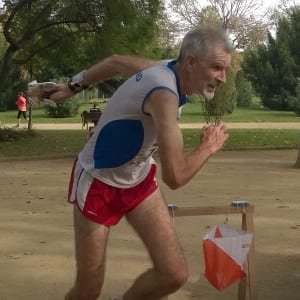Seconds count
Race preparation
Even if its not winning, just beating someone by that single second can be very satisfying. So how can you ensure you squeeze the most out of your run – here are a few tips.
I first became aware of this way back around 1971 when competing in a badge event (as they were called in those days) on Exmoor run by QO! After a gruelling course which had me out for about 75 minutes, to my delight I discovered I had won by one second. In the intervening 44 years there have been a number of races where that solitary second has been crucial. Check out the M55 course at the 2010 Midland Championships. Colin Dixon beat me by that 1 second and that was on the run in!
Here are the tips:
- Make sure you have everything packed and ready to go the night before. Produce a written checklist for yourself and make sure you tick it off every time. If you forget something you won’t be in the right frame of mind for your run.
- Aim to arrive at the event car park at least an hour before your intended start time, again to allow you time to get ready to run without panicking.
- On whichever hand you hold your map, draw an arrow on your thumb nail. Then when you are using your thumb to keep track of where you are on the map you are being far more specific and the eye gets there quicker.
- Get to the start at least 10 minutes before your run making sure you have warmed up sufficiently. A warm up should be at least 15 minutes. You are then starting off with the body in the right mode to run hard from the outset.
- During your 10 minutes at the start, identify two or three people running your course and, if possible, see which way they run off towards the first control. This allows you the luxury when you start off, of just glancing at your map then putting your head down and running. Not having to stand around looking at the map in the ‘panic zone’ where everyone can see you.
- Look at all of your control descriptions before you start to ensure you know what each one means. This particularly goes for the positioning of the kite. Where possible, memorise as many as you can, pay particularly attention to memorising the first two, including the codes (I just use the last two digits).
- In the start lane look at the blank map and work out where you are. You should now know where you are, which way your fellow competitors went and the description of the first control. From all this information you can make a very good stab at where the first control is, (prepare to be flexible on this – you could be wrong!).
- The first control must be a balance. Don’t set off too fast, but with the confidence from the tip immediately above, you should be able to set a good pace.
- Always be planning ahead. Make sure you know which way you need to leave the control and try to be in a position to flow through the control rather than going in and out – and its certainly not a stopping point! Not only will this waste those seconds but it will also help your competitors to see the control.
- ‘Go with the flow’ Try and run with the forest rather than against it. Ok it may be taking you off line, but you can compensate for that later.
- Finally how do you run between the last control and the finish? Usually there is no navigation involved, so put the map away, put your head down and run like crazy. One way to make this more interesting is to find someone of about your own standard and have a private competition at each race to see who has the fastest split from last control to the finish.
- Gavin Clegg
